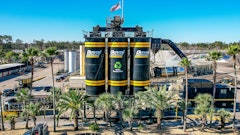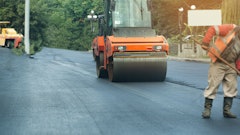
The Challenge:
Construct a road while working with 20% gradient and tight turns on the tropical Seychelles islands.
The Players:
Sey-Afrique Exporters
Wirtgen South Africa
The Process:
Praslin is the second-largest of the Seychelles islands, and tourism is the island’s main source of income. A road had to be diverted for a new five-star hotel and property development project. This road would have obstructed the residents’ access to the sea. Sey-Afrique Exporters from Pinetown in South Africa won the contract for construction of the new, roughly .93-mile stretch of road.
Temperatures between 95° and 104° F with relative humidity of over 90% made this a physically grueling job. In addition, the topography was tricky with gradients of more than 20% and tight hairpin bends. Sey-Afrique chose a Vogele Super 800 paver for the job. The small paver handles pave widths from 1.64 to 10.5 feet. Its asymmetrical material hopper allows for work close to edges, even in tight bends.
Helmut Bethge from Wirtgen South Africa trained and supervised the paving team throughout the job. “Although most of them had never laid hands on a paver before, they were very soon able to operate it on their own,” he says.
Obtaining asphalt was no easy matter on an island is approximately 7.46 miles long and 3.11 miles wide. Sey-Afrique had to revive an ancient government-owned mobile asphalt mixing plant in order to prepare bitumen-coated material. Although the mix did not meet the standard asphalt specifications, the Super 800 was able to produce good results with it.
Combined with an AB 200 Extending Screed in TV version, the paver placed two asphalt layers on a roughly consolidated base. The first one, a level-regulating layer between 1.2 and 4.7 inches thick, was paved to equalize the considerable unevenness of the base. A layer of such strongly varying thickness is unusual, but the paver made light work of the task. The existing curb served as a reference. Then a 2-inch wearing course followed.
Around 80 tons of mix were paved every day for the roadway, which varied in width between 24.61 and 34.45 feet.



























